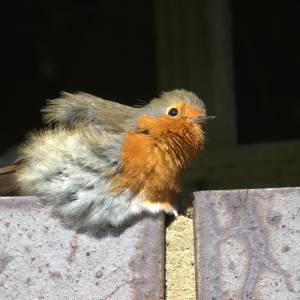Bosham Hoe
Lunch out today at Bosham Hoe. This is a picture taken across the harbour before the rain came pouring down. Many holiday makers visiting Bosham get caught out parking on what is known as the hard. It's an area of hard shingle at the edge of the harbour and many a car has had to be towed out when the tide is at full height.
The lower picture is part of the "Bayeaux Tapestry" depicting Harold, Earl of English and his knights riding to Bosham Church.
The site has been inhabited since Roman times, and is close to the famous palace at Fishbourne. Several important Roman buildings have been found in northern Bosham around Broadbridge including a possible temple, a small theatre and a mosaic. The Bosham Head, part of the largest Roman statue from Britain was found nearby. A legionary helmet was found in Bosham harbour and is now in Lewes museum. The helmet is of late Claudian date, the time of the invasion.
Tradition holds that Emperor Vespasian maintained a residence in Bosham, although there is no evidence of this. There are also said to be remains of a building popularly thought to be a villa belonging to Vespasian, at the Stone Wall in the parish. Pottery and tile fragments, of both Roman and early British period, have been discovered in the area, confirming pre-Anglo-Saxon activity. The possible Roman harbour here was part of the natural harbours between Portsmouth and Chichester known as Magnus Portus and its position, as latitude and longitude, was plotted as part of Ptolemy's Geography.
Much of Bosham's history during the Early Middle Ages is ecclesiastical. Bede mentions Bosham in his book The Ecclesiastical History of the English Nation, speaking of Wilfrid's visit here in 681 when he encountered a Celtic monk, Dicul, and five disciples in a small monastery. The village is one of only five places that appear on the map attached to the Anglo-Saxon Chronicle of around this time.
In 850, the original village church was built possibly on the site of a Roman building, and in the tenth century was replaced with Holy Trinity Church, situated beside Bosham Quay, that still serves as the local place of worship. There is a tradition that a daughter of Canute the Great drowned in a nearby brook and was buried here, although there seems to be little evidence for this. The tradition was originally linked to a fourteenth- or fifteenth-century effigy. In 1865 a coffin containing a child's skeleton was discovered, buried in the nave in front of what is now the chancel of Holy Trinity Church. This was thought to be Canute's daughter.
There is also a tradition that Canute had a palace in the village, perhaps where the Manor House now stands, or possibly at the harbour's edge, but no evidence has emerged. Legend has it that Bosham was the site at which he commanded the waves to "go back", so as to demonstrate to his overly deferential courtiers the limits of a King's powers.
There is also a legend that around this time Bosham Church was plundered by Danish pirates, who stole the tenor bell. As the pirate ship sailed away, the remaining church bells were rung. The tenor bell miraculously joined in, destroying the ship. The bell is still said to ring beneath the waters whenever the other bells are rung.
There is a local rumour that King Canute's daughter drowned in Bosham Millstream.
- 10
- 0

Comments
Sign in or get an account to comment.


